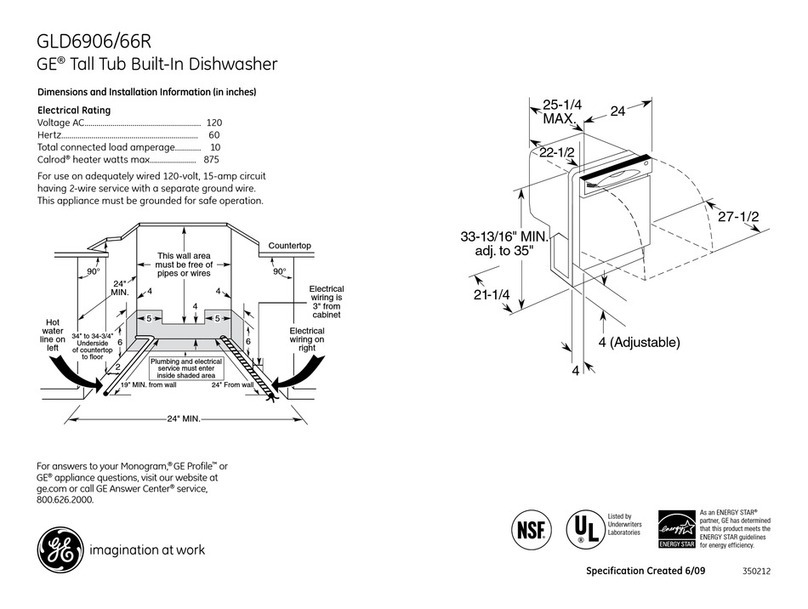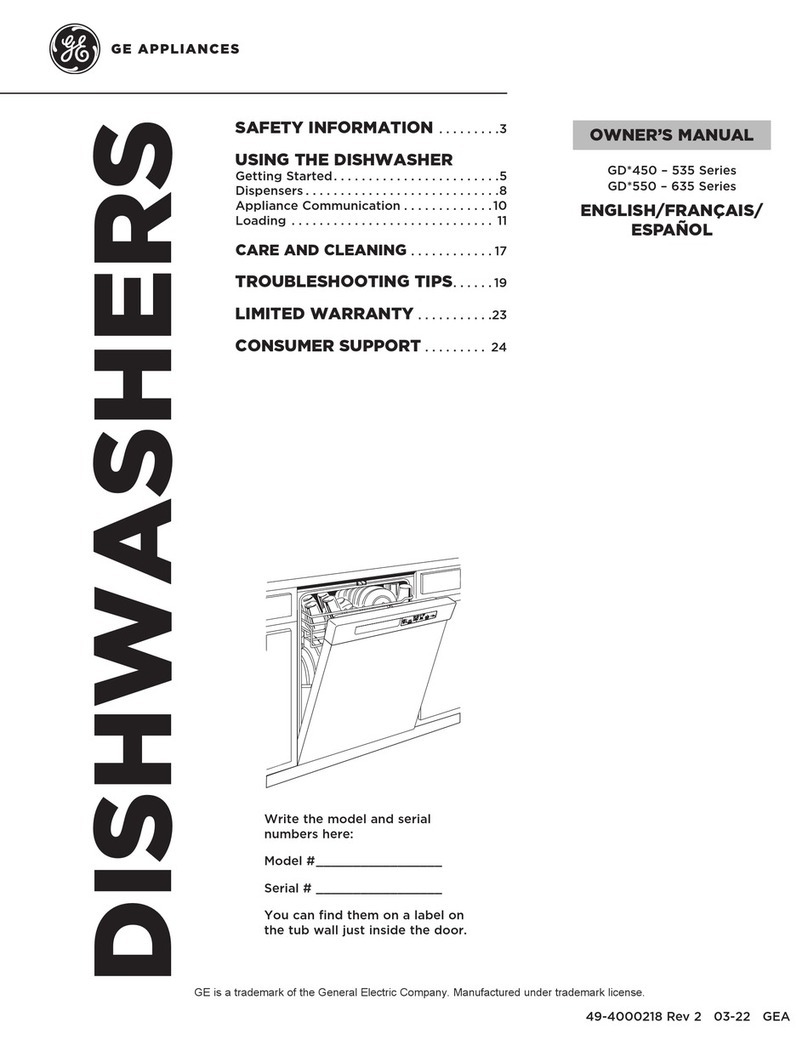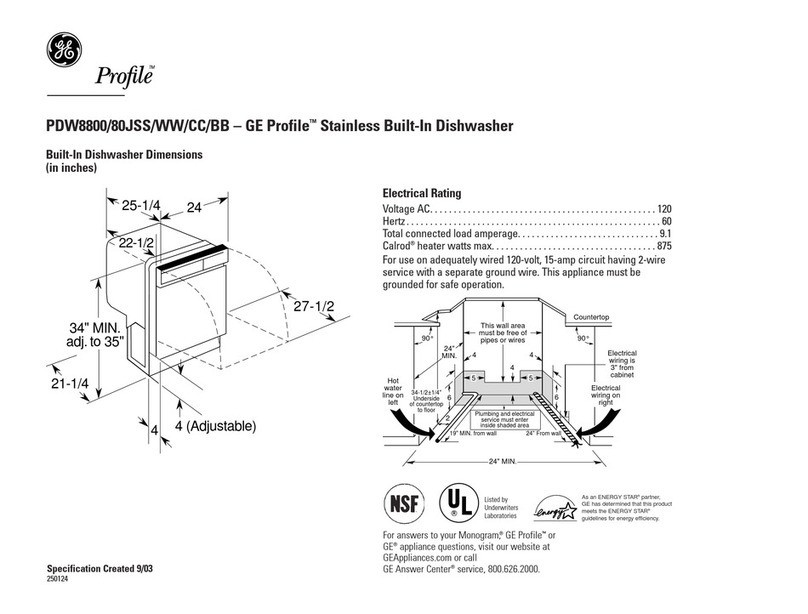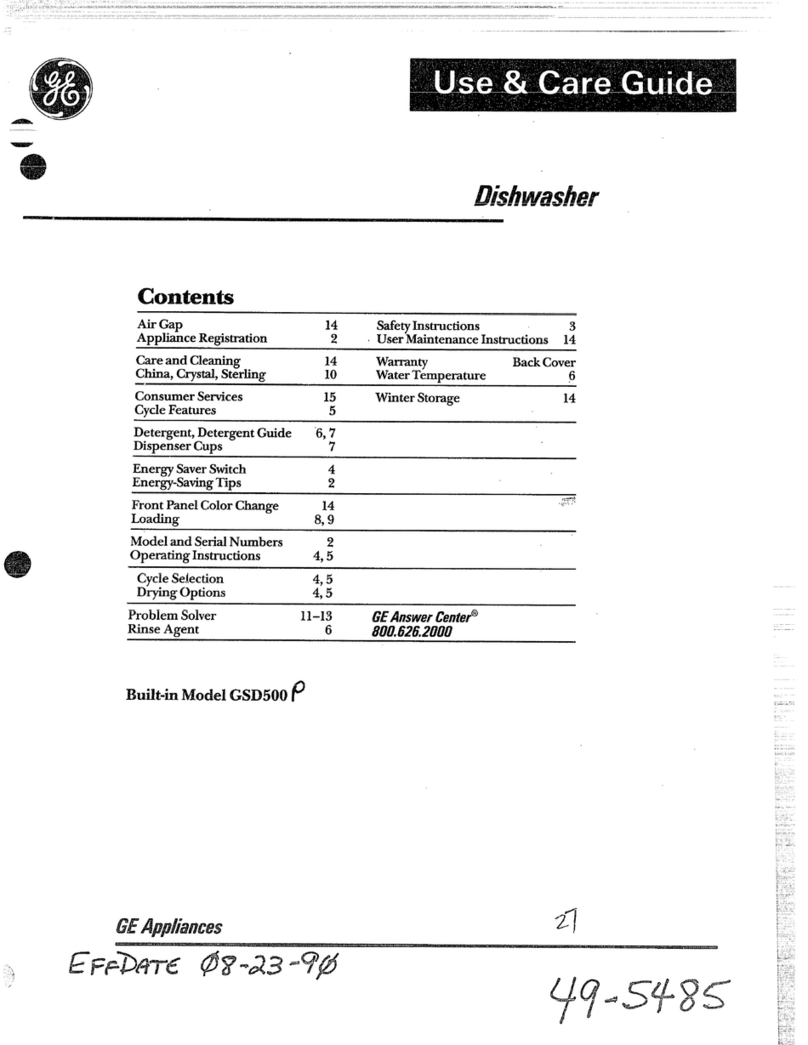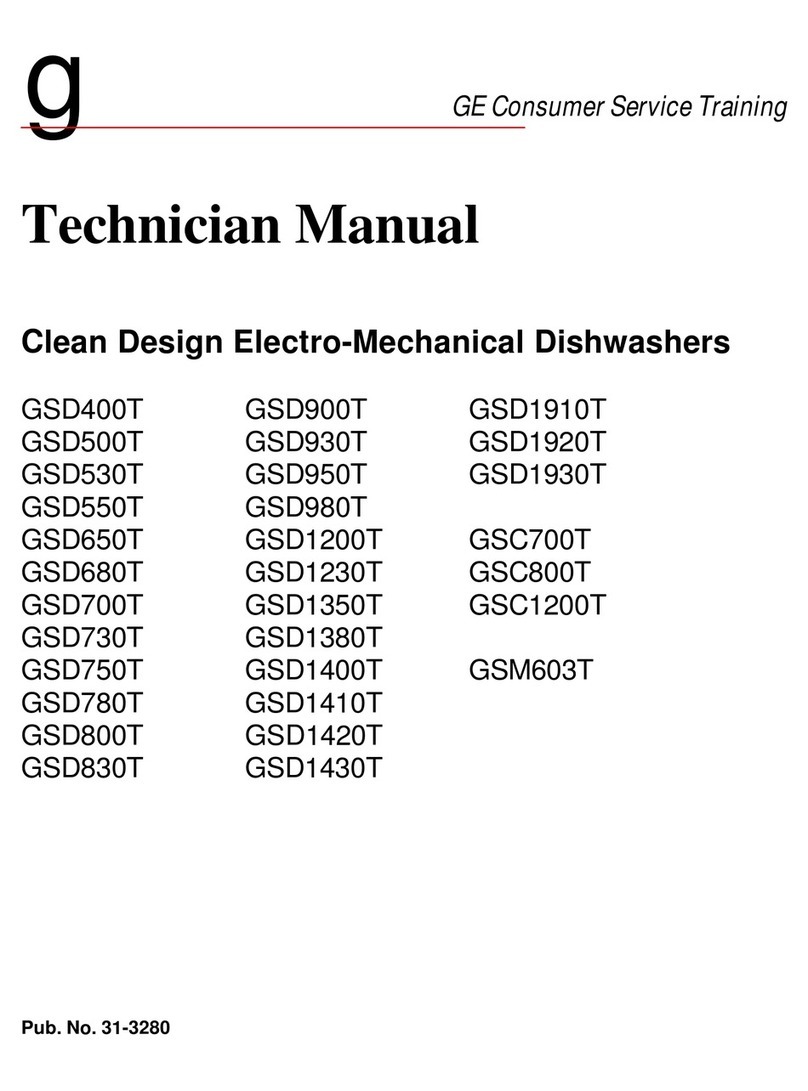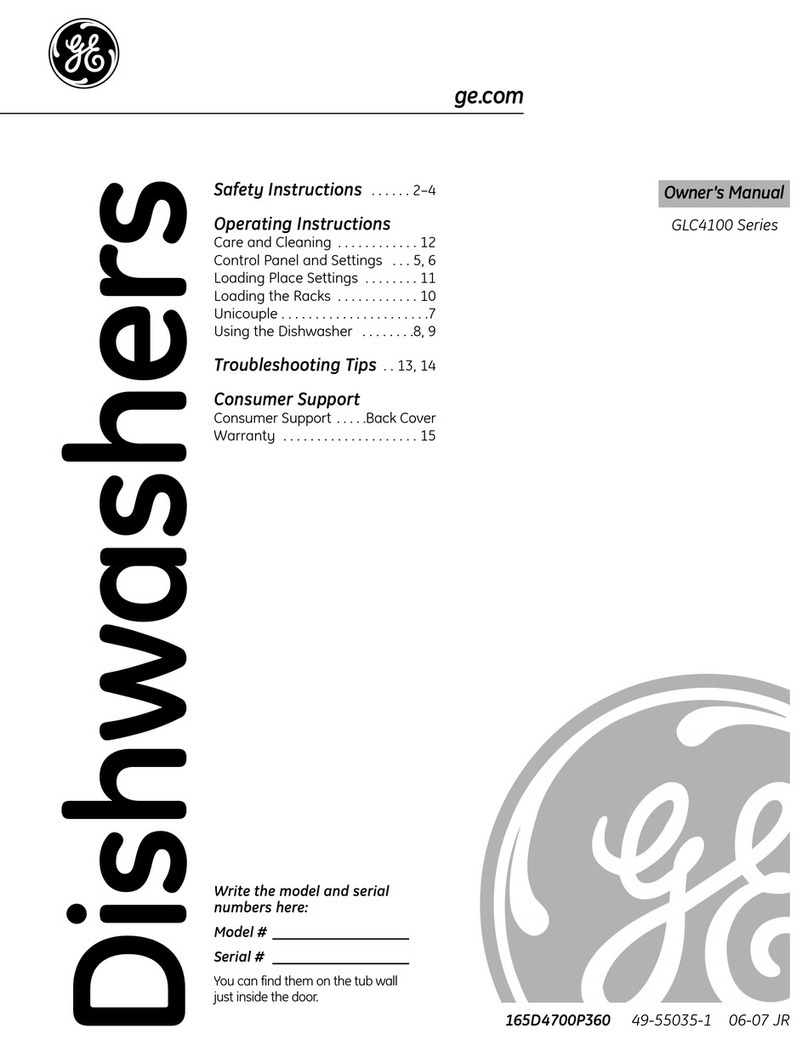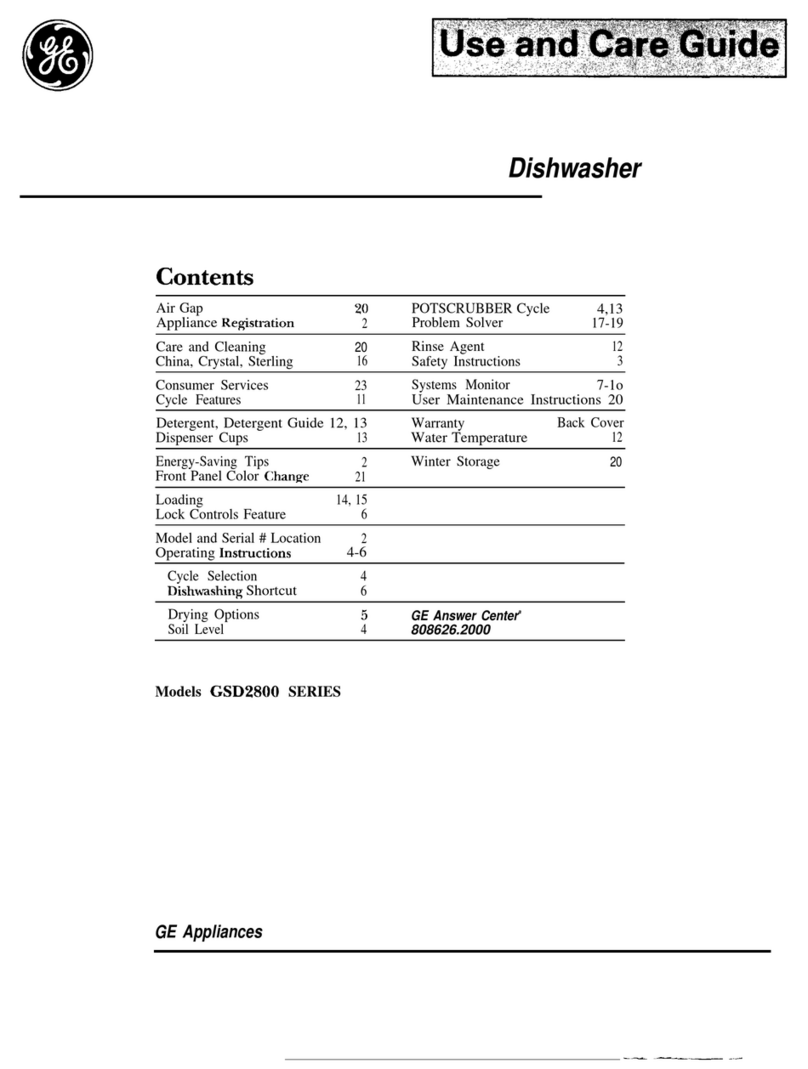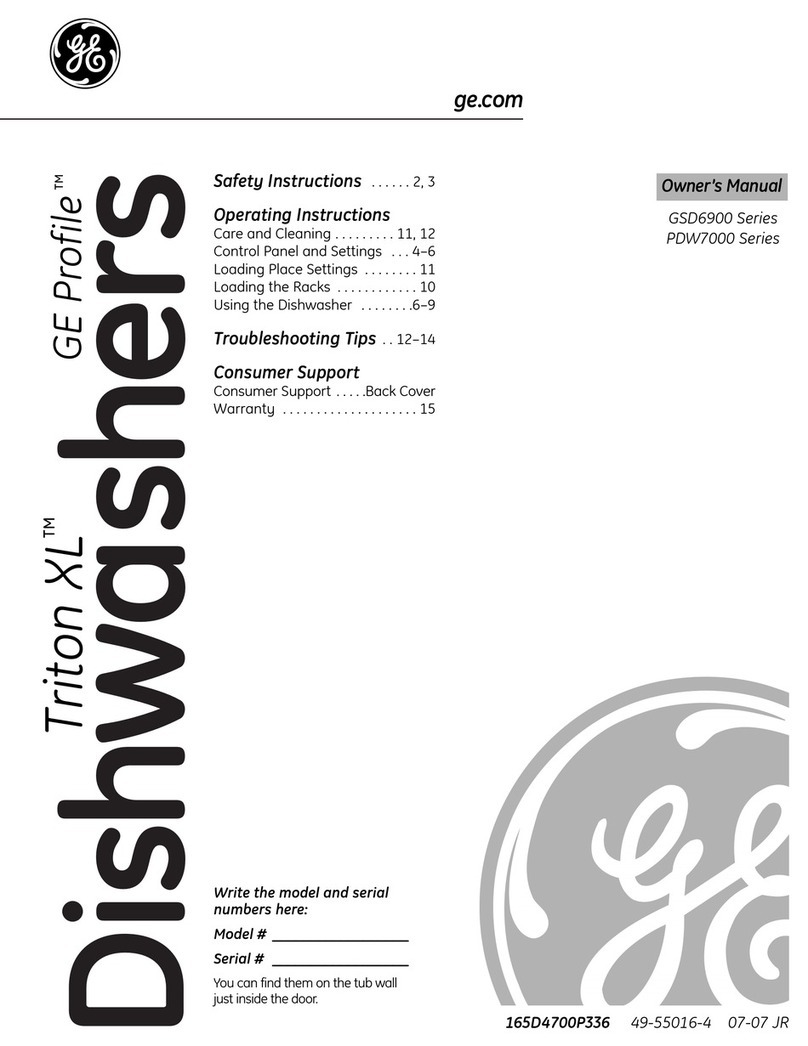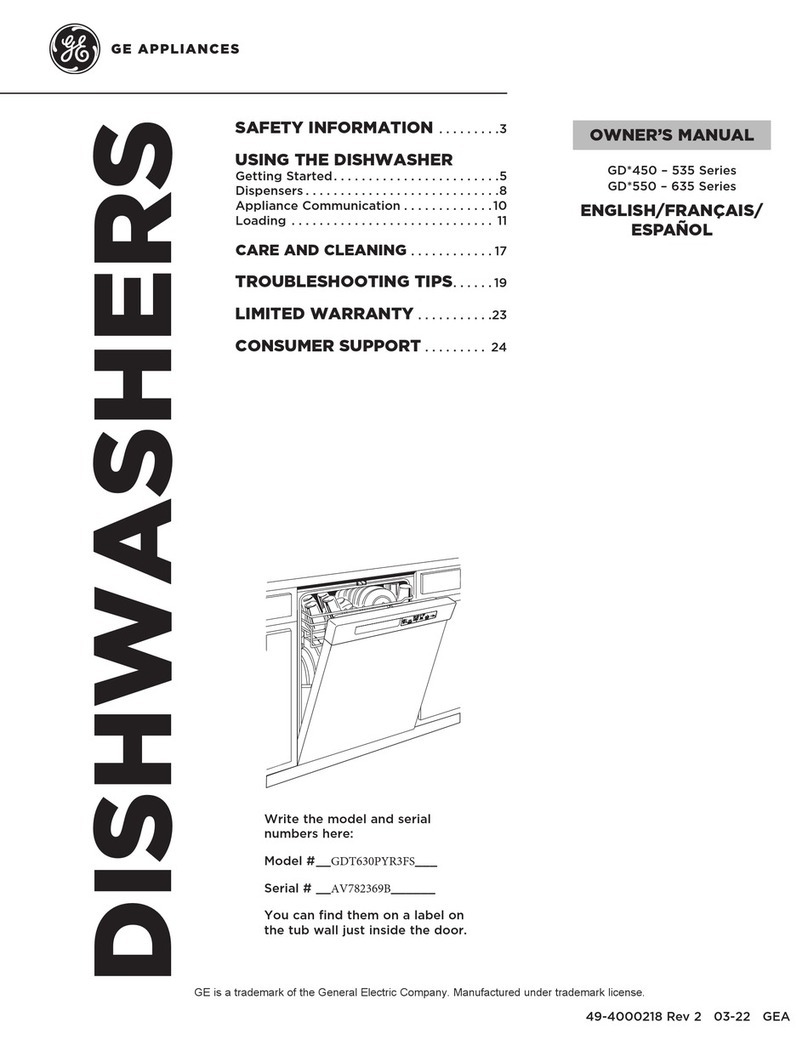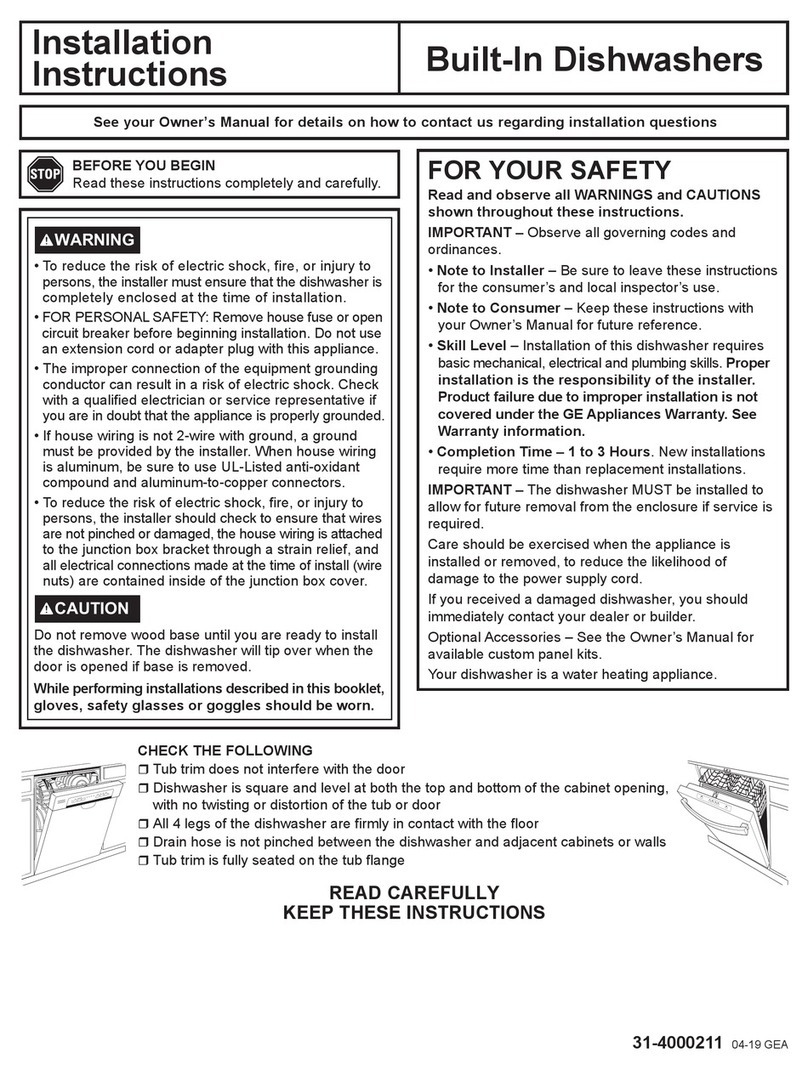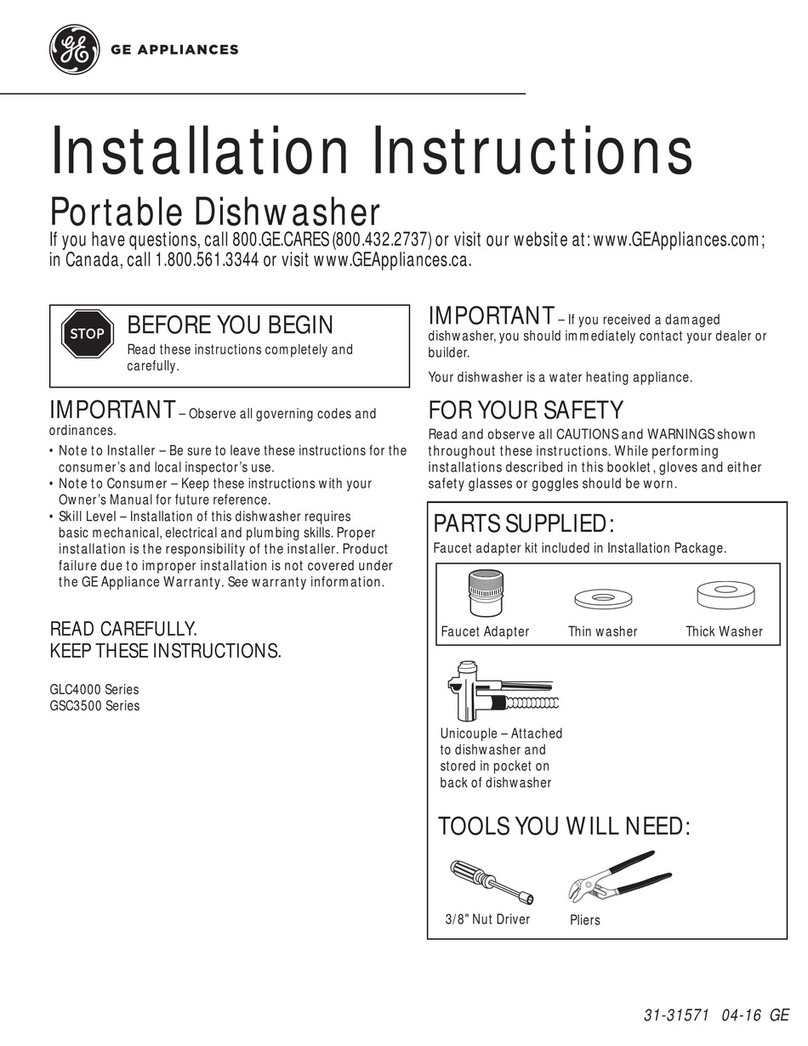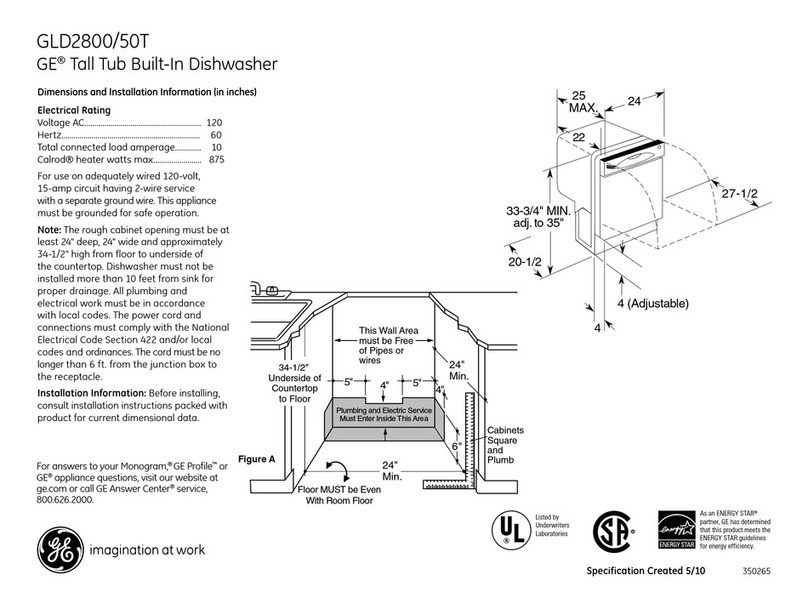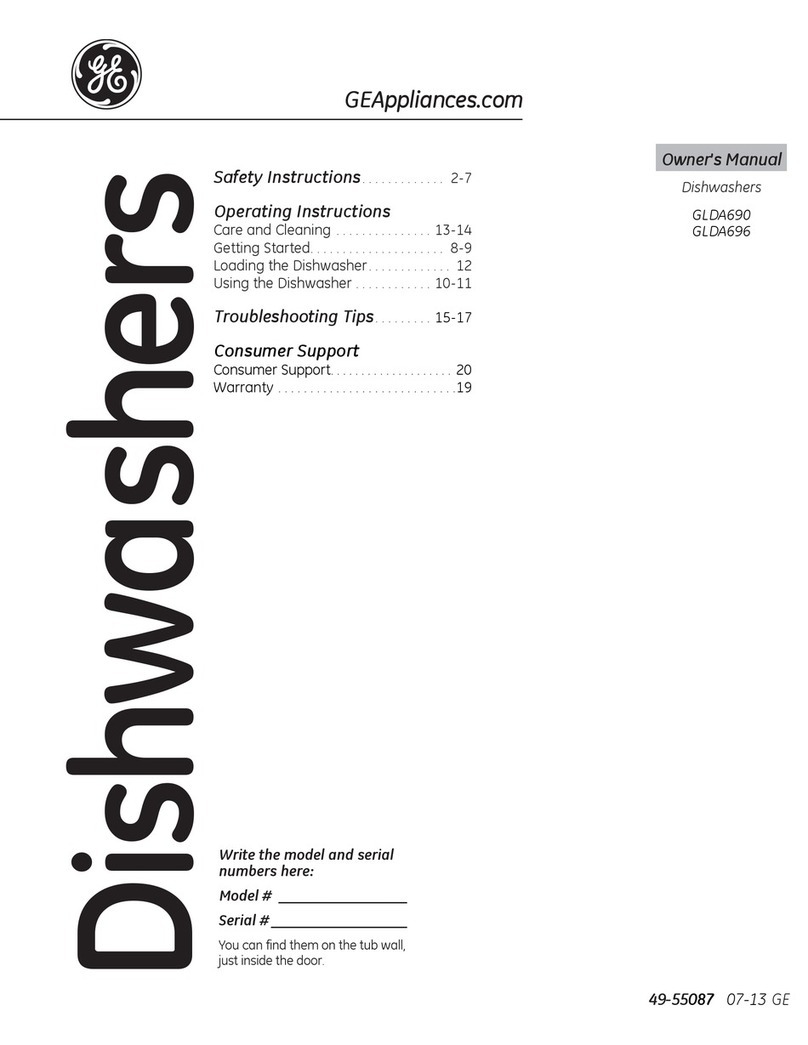TemperatureSensorSystem
Toget dishes clean and dry, you
needhot water.Tohelp you get water
of the proper temperature, your
dishwasher has awater heating
feature that automatically senses
the temperature of the water in the
washcycleand heats it, if necessary,
to the proper temperature. This
water heating feature may allow
you to turn down your household
water heater and saveenergy if
you’re willing to let the dishwasher
run alittle longer while it heats
water to the proper temperature.
For good washing and drying, the
entering water must be at least
120“F.Toprevent dish damage,
inlet water should not exceed 150“F.
How to test water temperature:
Check your water temperature
inside your dishwasher with a
candy or meat thermometer.
Let the dishwasher run through
one fill and pump out cycle, then
let the dishwasher fill with water
the second time.
When you hear the water stop
fillingj unlatch the door and ~lowly
open It.
Measure the temperature of the
water in the bottom of the tub this
way:
Remove the silverware basket and
place acandy or meat thermometer
in the water towards the middle of
the tub. If the temperature is less
than 120”F,you will not get good
washing results. Higher water
temperature is needed to dissolve
grease and activate powder
detergents.
Helpful hints: If outside
temperatures are unusually low,or
if your water travels along distance
from water heater to dishwasher,
YOUmay need to set your water
heater’s thermostat up. If you have
not used hot water for some time,
the water in the pipes will be cold.
Turn on the hot water faucet at the
sink and allow it to run until the
water is hot. Then start the
dishwasher. If you’verecently done
laundry or run hot water for
showers, give your water heater
time to recover before operating the
dishwasher.
Toimprove washability if the water
is less than 120”Fand you cannot
adjust your water heater: Select a
longer cycleand fill both detergent
cups at least half-fullwith detergent.
Help preventspotting
with arinse agent.
Arinse agent makes water flowoff
dishes quicker than usual. This
lessens water spotting and makes
drying faster, too.
For best dishwashing performance,
useofarinse agentsuch asJET DRY
brand is recommended.
Rinse agents come in either liquid
or solid form. Yourdishwasher
uses the solid form.
If you can’tfind any rinse agent,
write:
BENCKISER CONSUMER
PRODUCrS, INC.
(“JET DRY”)
1210WCounty Road E.
Arden Hills, MN 55112
Howto choose and use
the right detergent. !
First,use only powderor liquid
detergentspecifically made for
use in dishwashers. Other types
will cause oversudsing.
Second, check the phosphate
content. Phosphate helps prevent
hard-water materials from forming
spots or film on your dishes. If
your water is hard (7 grains or
more), your detergent has to work
harder. Detergents with ahigher
phosphate level will probably work
better. If the phosphate content is
low (8.7%or less), you’ll haveto
use extra detergent with hard water.
Yourwater department can tell
you how hard your water is. So
can your rural county agent. Or
your area’swater softener company.
Just call and ask them how many
“grains” of hardness is in your
water.
How much detergent should you
use? That depends. Is your water $
f., ,
“hard” or “soft”? With hard water,
you need extra detergent to get
dishes clean. With soft water,you
need less detergent.
Toomuch detergent with soft water
not only wastes money, it can be
harmful. It can cause apermanent
cloudiness of glassware, called
“etching.”An outside layer of glass
is etched away!But why take a
chance when it’seasy to find out
the hardness of your water.
Keep your detergent fresh and
dry. Under the sink isn’tagood
place to store detergent. Toomuch
moisture. Don’tput powder
detergent into the dispenser until
you’reready to wash dishes, either.
(It won’tbe fresh OR dry.)
If your powder detergent gets old
or lumpy, throw it away.It won’t
washwell. Old detergentoftenwon’t
dissolve.
If you use aliquid dishwasher
detergent, these precautions are not ~
necessary because liquid detergents
don’t “lump” as they age or come
in contact with water.




